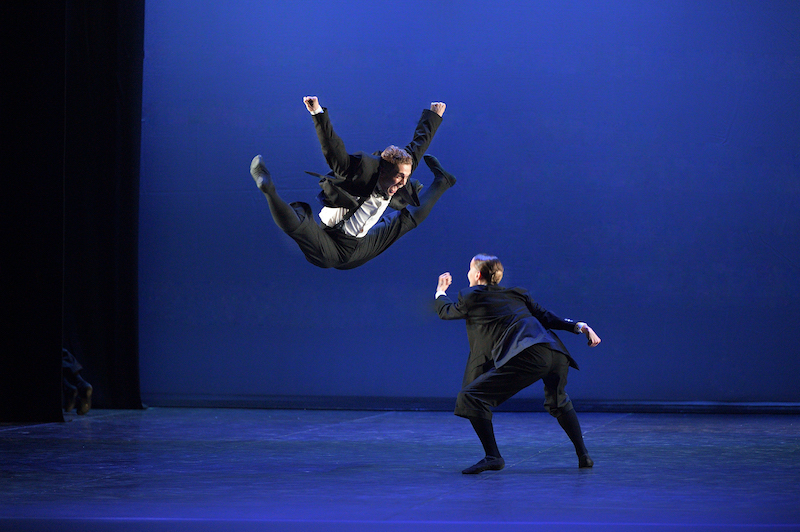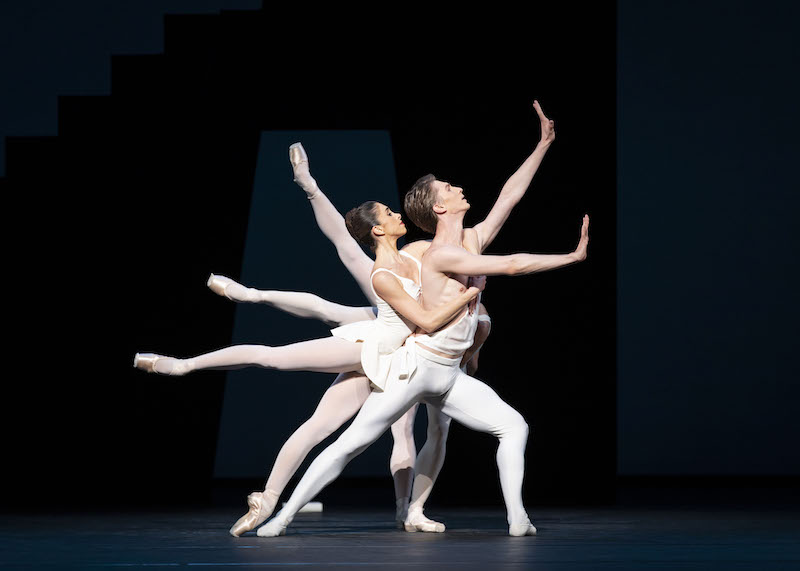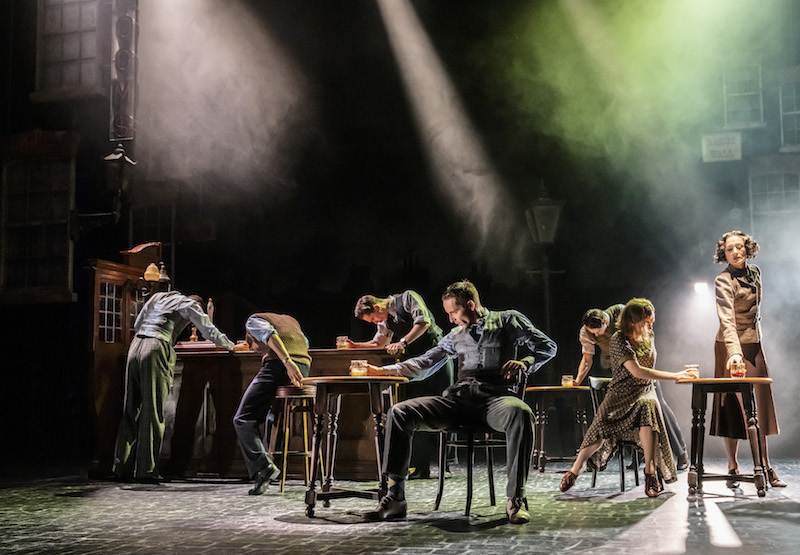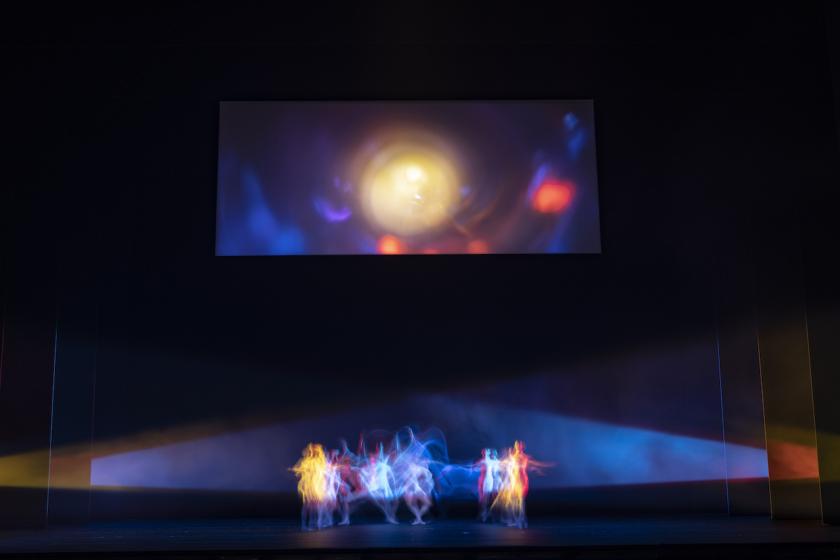It was never going to be a bumper year, just a bumpy one. With theatres dark until May or later, the usual 11 or 12 months of potential live-dance going was reduced to four or five. There was one bright shaft of optimism in late spring, and another in the autumn, when the gloom-clouds parted to allow a few weeks of almost-normality. But now we seem to have come full circle. In the past 10 days three out of London’s four Nutcrackers have either closed or been drastically postponed – one of them to this time next year. The show must go on, it will go on. Just not yet.
That doesn’t mean that, for dance and dancers, 2021 bore much resemblance to 2020. The mass extinction of small, precarious companies had largely run its course while survival funding for the bigger flagship companies was largely in place, which is not to say that the future looked rosy, just that in April 2021, by contrast with April 2020, annihilation no longer seemed inevitable. Dancers turned up for daily class in the studio instead of zooming from their kitchen or living room. Schemes for streaming past and present productions into peoples’ homes became less error-prone, and the Royal Opera House made a welcome decision to run its paid-for armchair streaming in tandem with its once highly popular live cinema broadcasts. Just as neither was a threat to the box office, it decided, nor were they a threat to each other. Cinema closures notwithstanding, the democratising of the art form continues.
 The great joy of 2021 was the discovery that ballet dancers – far from being hot-house plants prone to wither if deprived of ideal conditions – can bounce back leaner and stronger than ever. English National Ballet was the first to go live again in late May with Reunion, a programme of five 15-minute works, previously put out as short dance films shot under lockdown. The visible remnant of that process live at Sadler's Wells was the short interviews with the choreographers and key dancers, screened in place of printed programme notes. Fresh and illuminating, here was an idea with legs. The show’s other revelation was the choreographic talent of 24-year-old Arielle Smith, whose comedic invention and dynamic command of the stage deeply impressed (Jolly Folly, pictured above).
The great joy of 2021 was the discovery that ballet dancers – far from being hot-house plants prone to wither if deprived of ideal conditions – can bounce back leaner and stronger than ever. English National Ballet was the first to go live again in late May with Reunion, a programme of five 15-minute works, previously put out as short dance films shot under lockdown. The visible remnant of that process live at Sadler's Wells was the short interviews with the choreographers and key dancers, screened in place of printed programme notes. Fresh and illuminating, here was an idea with legs. The show’s other revelation was the choreographic talent of 24-year-old Arielle Smith, whose comedic invention and dynamic command of the stage deeply impressed (Jolly Folly, pictured above).
In June the Royal Ballet’s Balanchine and Robbins, a triple bill of mid-20th century American classics, was also one for the memory bank. I must have seen the Balanchine/Stravinsky ballet Apollo two dozen times yet felt I was only fully seeing it for the first time in Vadim Muntagirov’s title role debut. It wasn’t just that his physique held up startlingly well in white tights and little else, but also that he led us with such clarity through Apollo’s life stages, from swaddled babe to tearaway youth to resplendent god (pictured below with the three Muses). Mikhail Baryshnikov is always held to be the great interpreter of this role but for me, Muntagirov offered at least as much nuance and pent-up power.
 North of the border, Scottish Ballet pulled off something of a double coup with Starstruck. This was a re-creation and expansion of a jazz ballet made by Gene Kelly in 1960, yielding both a live touring show and a feature film. Scottish has form in ballet-to-screen and this project – the concept of Scottish AD Christopher Hampson in cahoots with Kelly’s widow – didn’t put a foot wrong, with enough stepping-over-a-chair gags to set your Singin’ in the Rain receptors buzzing. The big swoony Gershwin score is a corker.
North of the border, Scottish Ballet pulled off something of a double coup with Starstruck. This was a re-creation and expansion of a jazz ballet made by Gene Kelly in 1960, yielding both a live touring show and a feature film. Scottish has form in ballet-to-screen and this project – the concept of Scottish AD Christopher Hampson in cahoots with Kelly’s widow – didn’t put a foot wrong, with enough stepping-over-a-chair gags to set your Singin’ in the Rain receptors buzzing. The big swoony Gershwin score is a corker.
Of the few wholly original danceworks to be made this year, two stood out. Matthew Bourne’s The Midnight Bell restored his reputation as the master of wordless dance theatre. Inspired by the novels of the British author Patrick Hamilton and set among the fog-bound pubs of 1930s Soho (pictured below), it followed 12 urban singletons on their lonely search for love. After two hours in the theatre you were hard pressed to identify anything so definite as a plot, yet those two hours were as affecting as anything Bourne has produced in 30 years.
 At the other end of the scale, the Royal Ballet’s Dante Project (pictured top), timed to mark the 700th anniversary of the poet’s death, was remarkable for its massive cast and even more massive ambition, largely thrillingly achieved. Presenting an amalgam of Dante Alighieri’s life and work through Wayne MacGregor's choreography, a giddying orchestral score by Thomas Adès and seraphic artwork by Tacita Dean, the result was a sensual blast. Even after three live viewings (I couldn’t keep away), many of its myriad details eluded me, but the whole experience was as deep, as rich and as elevating as I have ever hoped to find in an opera house. A filmed performance is still available to stream, and I’m on to that too.
At the other end of the scale, the Royal Ballet’s Dante Project (pictured top), timed to mark the 700th anniversary of the poet’s death, was remarkable for its massive cast and even more massive ambition, largely thrillingly achieved. Presenting an amalgam of Dante Alighieri’s life and work through Wayne MacGregor's choreography, a giddying orchestral score by Thomas Adès and seraphic artwork by Tacita Dean, the result was a sensual blast. Even after three live viewings (I couldn’t keep away), many of its myriad details eluded me, but the whole experience was as deep, as rich and as elevating as I have ever hoped to find in an opera house. A filmed performance is still available to stream, and I’m on to that too.














Add comment